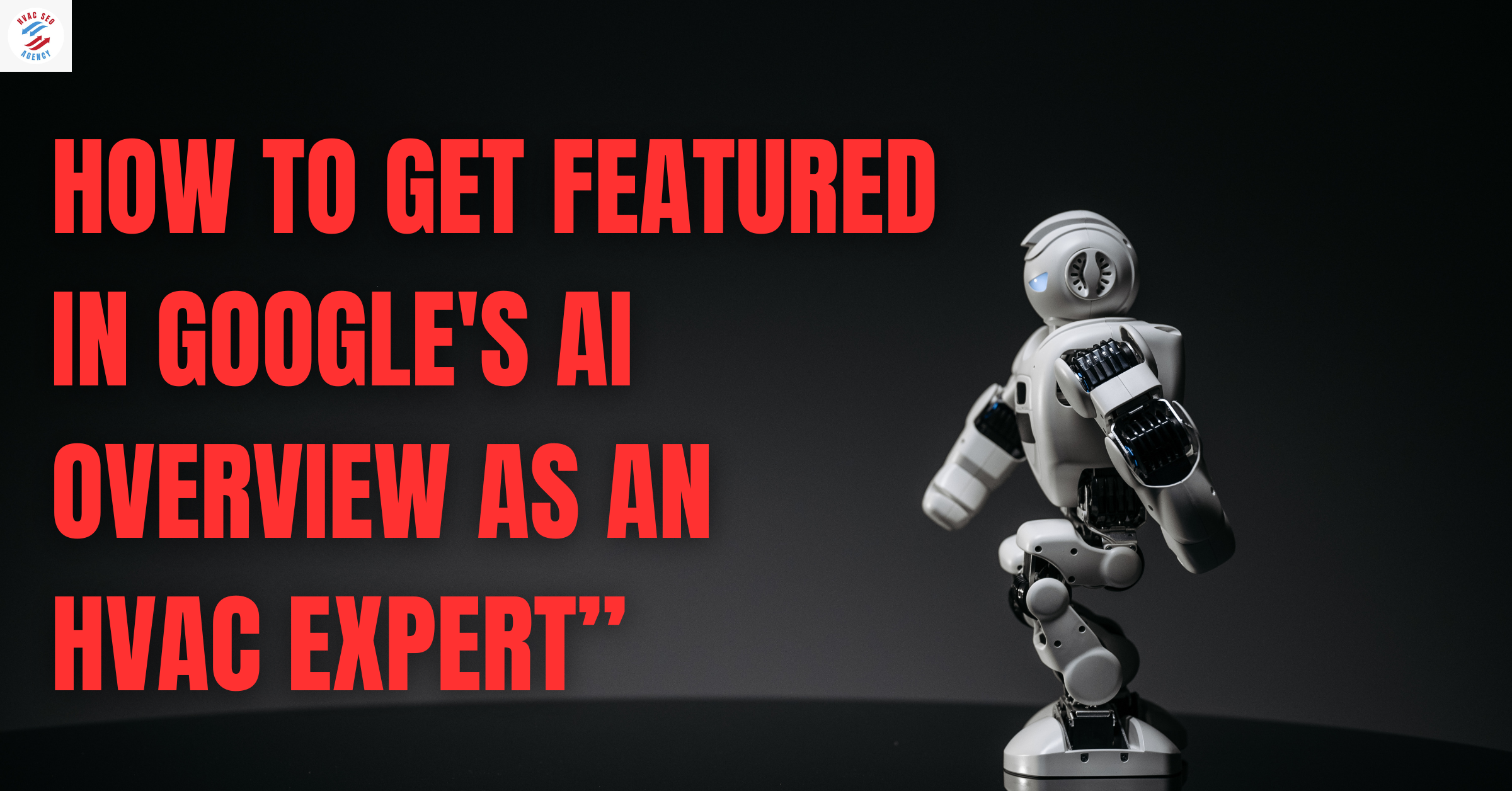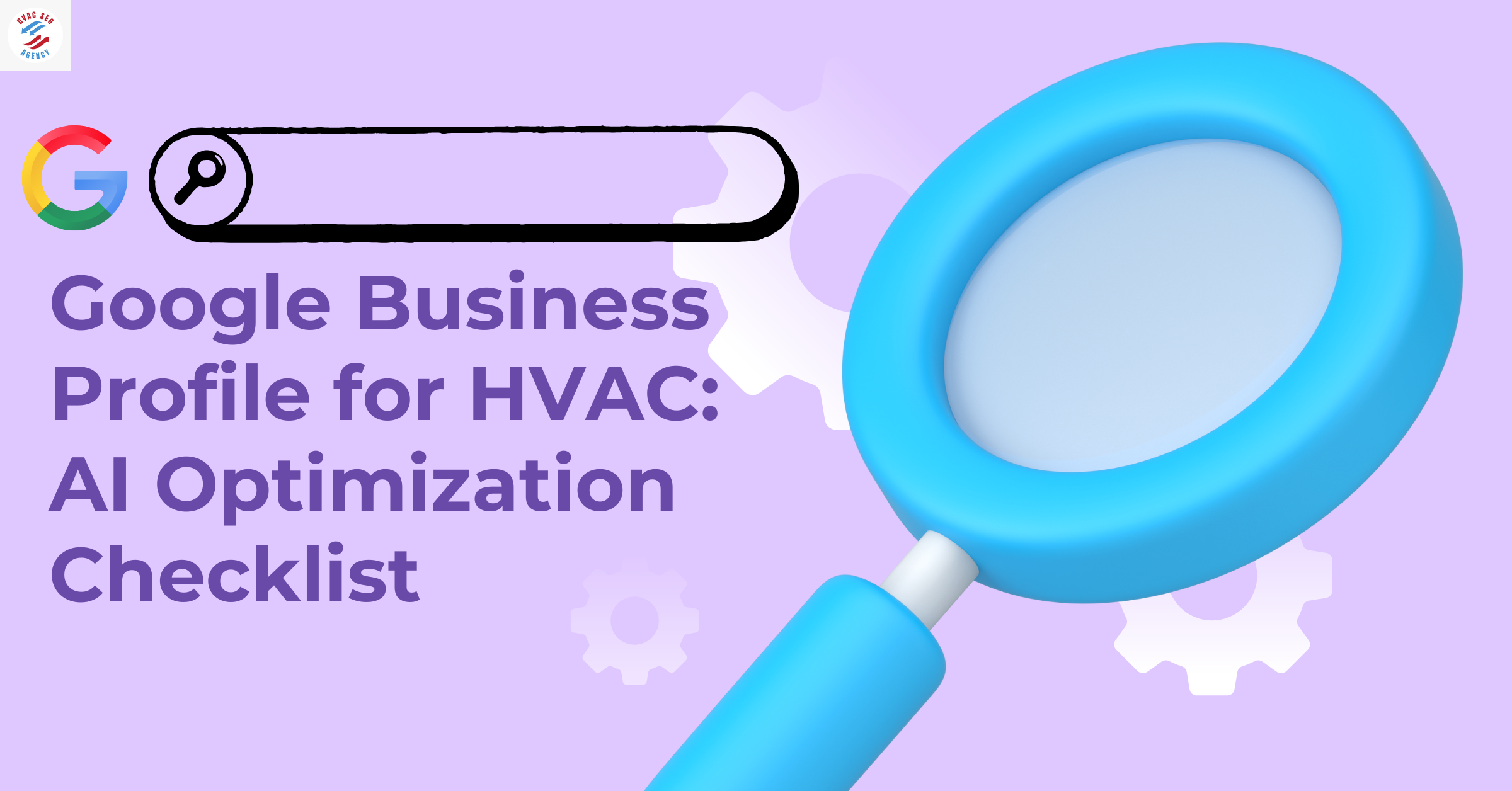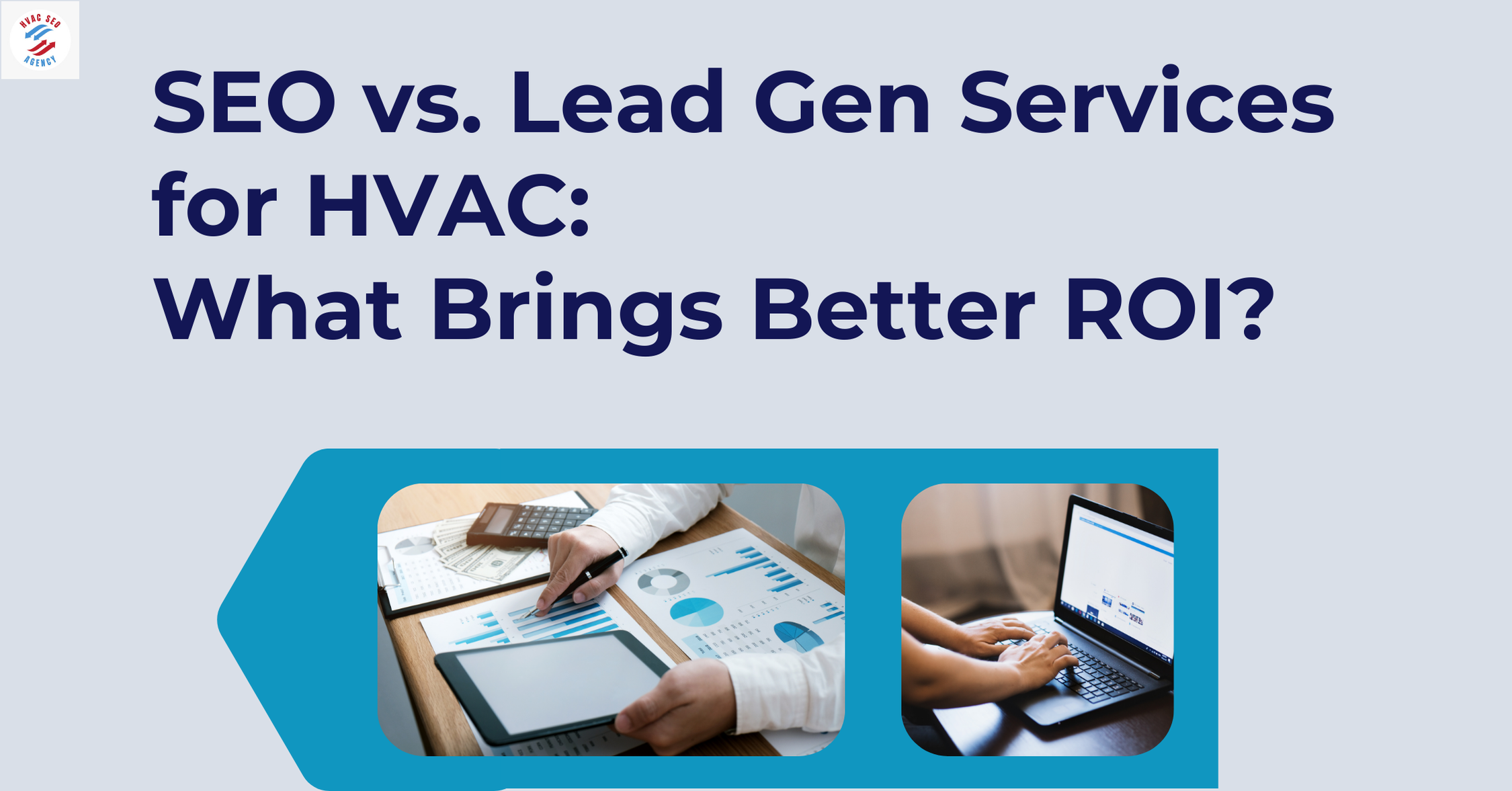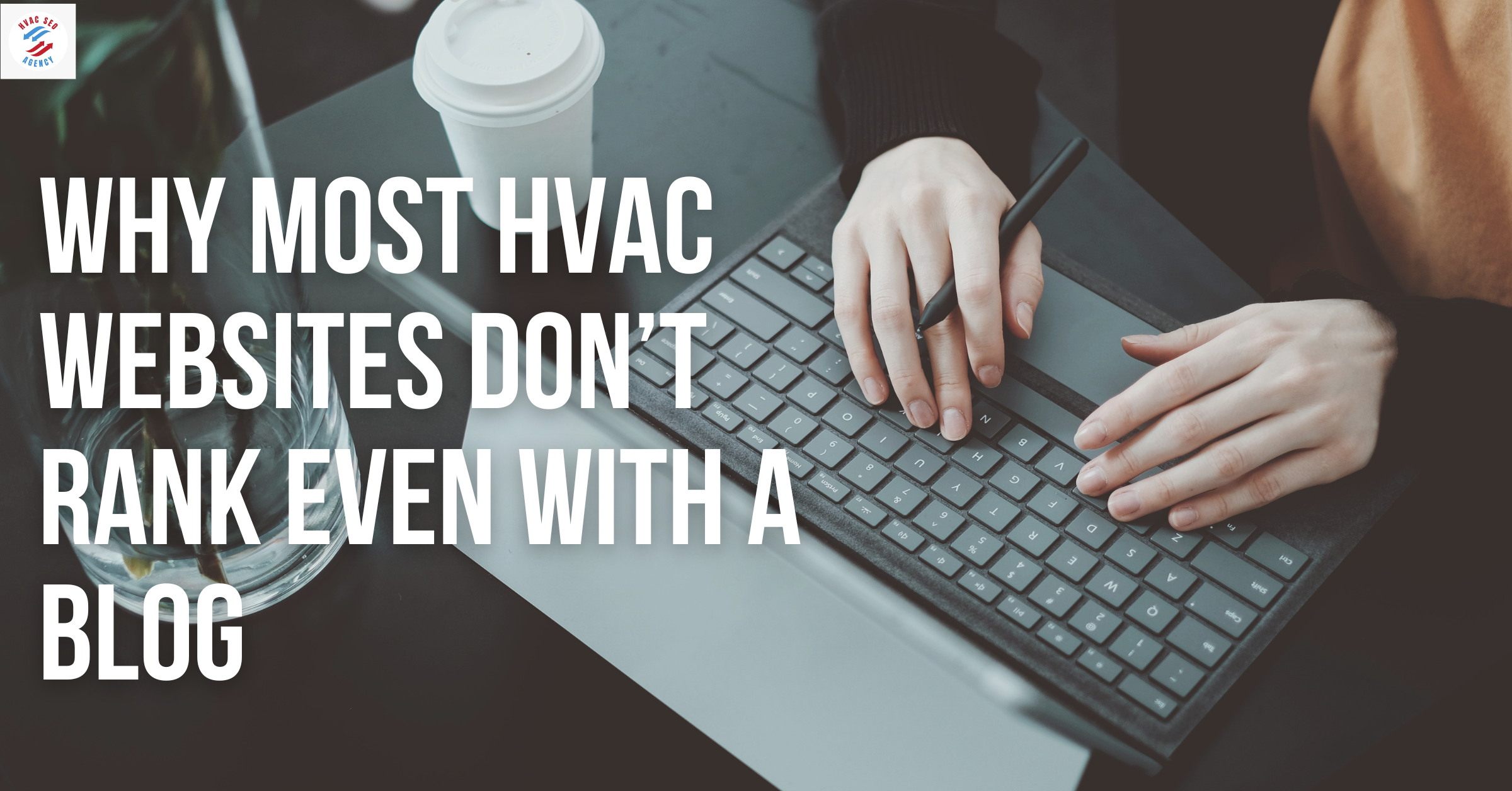How to Improve Indoor Air Quality: Best HVAC Solutions for Clean Air

Indoor air quality (IAQ) is a growing concern for homeowners and businesses across the U.S. With people spending nearly 90% of their time indoors, exposure to airborne contaminants has become a serious health issue. According to the Environmental Protection Agency (EPA), indoor air can be 2 to 5 times more polluted than outdoor air. Poor IAQ is linked to allergies, asthma, respiratory issues, and reduced productivity in workplaces.
While air purifiers and natural ventilation help, indoor air quality solutions powered by HVAC systems offer the most reliable approach to cleaner air. A properly maintained HVAC system with air filtration HVAC solutions can significantly reduce airborne pollutants, ensuring healthier indoor environments.
Expert HVAC SEO Agency, we understand the importance of optimizing HVAC businesses to provide high-quality IAQ solutions to homeowners and commercial clients. With the right HVAC system upgrades, smart air filtration technologies, and humidity control, businesses can enhance indoor air quality while improving energy efficiency.
This blog explores the best HVAC solutions for clean air, focusing on high-efficiency air filtration, air purification technology, ventilation strategies, humidity control, and smart HVAC advancements.
1. The Urgency of Improving Indoor Air Quality
The Hidden Threats of Poor IAQ
Indoor air is filled with invisible contaminants that impact human health. These pollutants come from various sources, including cooking fumes, mold, cleaning chemicals, pet dander, and dust mites. Without proper air filtration HVAC systems, these pollutants accumulate, leading to respiratory problems and long-term health effects.
Why HVAC Systems Play a Critical Role
HVAC systems are not just about heating and cooling; they directly impact IAQ by controlling air circulation, humidity levels, and pollutant filtration. A well-maintained HVAC setup ensures better airflow, removes airborne contaminants, and prevents the buildup of allergens and toxins inside homes and offices.
Key Pollutants That Affect Indoor Air Quality
The EPA’s Air Quality Index (AQI) measures indoor pollution levels. Homes without proper HVAC air filtration often score poorly on AQI tests, leading to higher risks of respiratory illnesses.
Graph: The Link Between IAQ and Health
A study conducted by the National Center for Biotechnology Information (NCBI) shows that homes with low IAQ see a 32% increase in respiratory illnesses compared to those with proper indoor air quality solutions.
(Graph showing percentage increase in respiratory issues in homes with vs. without HVAC air filtration)
2. The Role of HVAC Systems in Indoor Air Quality Improvement
How HVAC Systems Impact IAQ
A properly designed and well-maintained HVAC system directly influences indoor air quality solutions by:
Filtering out allergens and toxins
Enhancing airflow to prevent air stagnation
Regulating indoor humidity levels
Removing mold spores and bacteria
The Difference Between Traditional and Modern HVAC Solutions
Traditional HVAC systems were primarily designed for temperature regulation. However, modern HVAC advancements now focus on both climate control and IAQ improvement, using high-efficiency air filtration and purification technologies.
Graph Representation: HVAC’s Impact on IAQ
A survey by the American Lung Association found that homes equipped with advanced HVAC air filtration saw a 40% decrease in airborne pollutants, leading to healthier living spaces.
(Graph comparing air pollution levels in homes with traditional vs. modern HVAC solutions)
Common IAQ Problems Caused by Poor HVAC Maintenance
Clogged filters allow dust and bacteria to circulate indoors.
Mold buildup in air ducts contributes to respiratory problems.
Improper ventilation leads to excessive indoor humidity and stale air.
Old HVAC units fail to filter out small airborne particles, reducing IAQ.
3. Best HVAC Solutions for Improving Indoor Air Quality
Improving indoor air quality solutions requires more than just opening windows or using standalone air purifiers. The most effective way to ensure clean indoor air is by integrating advanced HVAC solutions that actively filter, purify, and regulate airflow.
From high-efficiency air filtration HVAC systems to modern purification technologies, these solutions eliminate airborne pollutants while maintaining energy efficiency. Below are the best HVAC methods for creating a healthier indoor environment.
A. High-Efficiency Air Filtration: The First Line of Defense
The Role of Air Filtration in IAQ Improvement
One of the most crucial elements in any HVAC system is its air filtration capability. A high-efficiency air filtration HVAC system can remove harmful particles like:
Dust, pollen, and pet dander
Smoke and airborne bacteria
Volatile organic compounds (VOCs)
Mold spores and dust mites
Choosing the Right MERV & HEPA Filters for Better IAQ
The MERV rating (Minimum Efficiency Reporting Value) determines a filter's effectiveness in trapping pollutants. Below is a detailed comparison to help you choose the best filter for your needs.
HEPA filters are considered the gold standard in indoor air quality solutions, as they can trap 99.97% of particles as small as 0.3 microns.
Why Activated Carbon Filters Are Important
For homeowners concerned about chemical pollutants, activated carbon filters provide an additional layer of purification. These filters adsorb gases and odors, making them ideal for removing:
Cooking fumes
VOCs from furniture and paints
Tobacco smoke and pet odors
Graph: Air Filtration Impact on IAQ
A study by the American Society of Heating, Refrigerating, and Air-Conditioning Engineers (ASHRAE) found that homes using MERV 13 or HEPA filters saw a 65% reduction in airborne pollutants compared to homes with standard HVAC filters.
(Graph showing improvement in air quality with MERV 8 vs. MERV 13 vs. HEPA filters)
B. Advanced Air Purification Technologies for HVAC Systems
While air filtration HVAC systems trap pollutants, air purification technologies go a step further by neutralizing bacteria, viruses, and mold spores. Below are some of the most advanced purification methods integrated into modern HVAC systems.
1. UV-C Light Purifiers: Killing Airborne Pathogens
Ultraviolet (UV-C) light technology is widely used in hospitals and commercial buildings to disinfect air and HVAC coils. It destroys bacteria, viruses, and mold spores by breaking down their DNA structure, preventing them from spreading indoors.
Effectiveness of UV-C Purifiers:
Eliminates up to 99.9% of airborne bacteria and viruses
Reduces mold buildup inside HVAC ducts
Enhances airflow by preventing microbial growth
2. Bipolar Ionization: Reducing Airborne Pollutants by 80%
Bipolar ionization technology works by releasing charged ions into the air, which attach to pollutants and make them easier to filter out. It is highly effective in:
Neutralizing VOCs, dust, and allergens
Breaking down bacteria and viruses
Reducing odors from pets, cooking, and smoke
Studies show that bipolar ionization can reduce airborne contaminants by up to 80%.
3. Photocatalytic Oxidation (PCO): Destroying VOCs and Toxins
PCO technology combines UV light and a titanium dioxide catalyst to break down toxic gases and organic pollutants into harmless carbon dioxide and water molecules.
Key Benefits of PCO:
Reduces indoor formaldehyde, benzene, and chemical odors
Destroys airborne bacteria and viruses
Keeps air fresh without producing harmful ozone
Table: Effectiveness of Different HVAC Purification Methods
Proper ventilation is a critical aspect of indoor air quality solutions. Without effective ventilation, pollutants accumulate, leading to poor IAQ and increased health risks. Many homes and businesses in the U.S. rely on HVAC systems with air filtration HVAC features, but ventilation plays an equally important role in maintaining fresh indoor air.
Why Natural Ventilation Isn't Enough
Many homeowners believe that simply opening windows can solve ventilation problems. However, this approach is often ineffective, especially in urban environments where outdoor air contains pollutants, smoke, and allergens.
According to the EPA, poor ventilation can lead to:
Higher concentrations of VOCs and CO2 buildup
Increased mold growth due to trapped moisture
Damp, stale air leading to respiratory discomfort
How HVAC Ventilation Improves IAQ
Modern HVAC systems with air filtration HVAC capabilities integrate mechanical ventilation to ensure a continuous exchange of indoor and outdoor air. This helps:
Remove pollutants trapped indoors
Maintain consistent airflow without energy loss
Reduce moisture levels, preventing mold growth
Heat Recovery Ventilators (HRVs) vs. Energy Recovery Ventilators (ERVs)
For homes and businesses, two of the best mechanical ventilation systems are HRVs and ERVs.
Which is Better?
HRVs work best in colder climates where heat retention is a priority.
ERVs are ideal for humid regions, as they balance indoor moisture levels.
Graph: Energy Savings with HRVs & ERVs
Studies show that homes using HRVs/ERVs with HVAC systems experience 30% lower heating/cooling costs, while also improving IAQ by 50% compared to homes without ventilation systems.
(Graph comparing HVAC energy consumption with vs. without HRVs/ERVs)
D. Humidity Control: The Hidden Factor in IAQ
Humidity levels play a crucial role in indoor air quality solutions. If indoor air is too dry, it can lead to irritated respiratory systems, while excess humidity encourages mold growth and worsens allergies. An optimized HVAC system can regulate humidity levels, ensuring a healthy indoor environment.
How Humidity Affects Indoor Air Quality
High Humidity Risks:
Encourages mold, mildew, and dust mites
Leads to musty odors and bacterial growth
Causes structural damage to homes
Low Humidity Risks:
Triggers dry skin, respiratory irritation, and static electricity
Increases susceptibility to colds, flu, and airborne infections
Can cause cracks in wooden furniture and flooring
Ideal Humidity Level: 30%-50% (According to the EPA)
Whole-House Dehumidifiers vs. Humidifiers: Which One Do You Need?
Depending on climate and indoor conditions, an HVAC-integrated humidifier or dehumidifier may be necessary.
Modern HVAC systems now come with smart humidity control, allowing homeowners to:
Automatically adjust humidity levels based on IAQ sensors
Optimize energy use by preventing HVAC overwork
Prevent mold and bacteria growth with precise moisture regulation
Smart HVAC systems can integrate with smart thermostats, ensuring that humidity stays within the ideal range without requiring manual adjustments.
Graph Representation: IAQ Improvements with Smart Humidity Control
Recent studies show that homes using HVAC-integrated humidifiers/dehumidifiers experience 50% fewer mold-related IAQ issues compared to homes without humidity control.
(Graph comparing IAQ improvements with and without smart humidity control)
4. Smart HVAC Technology: The Future of Air Quality Management
As technology advances, indoor air quality solutions have become smarter and more efficient. Smart HVAC systems can automatically monitor, adjust, and improve IAQ, making them a game-changer for homes and businesses.
Modern air filtration HVAC solutions now integrate AI, IoT, and sensor-based technology to optimize ventilation, humidity control, and air purification. This ensures maximum air quality with minimal energy consumption.
A. Smart Thermostats with IAQ Monitoring
How Smart Thermostats Improve IAQ
Traditional thermostats focus solely on temperature control, but smart thermostats also monitor air quality, humidity, and ventilation.
Automatic IAQ adjustments: Detects pollutants and optimizes airflow
Humidity regulation: Prevents mold growth and dry air
Energy efficiency: Reduces HVAC energy waste while ensuring fresh air circulation
Popular Smart Thermostats for IAQ:
Nest Learning Thermostat – Adjusts HVAC settings based on air quality
Ecobee SmartThermostat – Features IAQ monitoring and smart humidity control
Honeywell T9 – Works with sensors to optimize HVAC performance
Homes with smart HVAC systems see a 20-30% reduction in airborne pollutants compared to traditional HVAC setups.
B. IoT-Enabled HVAC Systems for Real-Time IAQ Management
The Internet of Things (IoT) has transformed HVAC air filtration by allowing real-time monitoring and automation.
How IoT Improves IAQ:
Detects and removes pollutants instantly
Automates ventilation and humidity control
Reduces energy waste while maintaining fresh air circulation
Graph : IAQ Improvement with IoT HVAC Systems
A study by the U.S. The Department of Energy found that IoT-enabled HVAC systems improve IAQ by 35-50%, ensuring better health outcomes.
(Graph comparing IAQ levels in homes with vs. without IoT HVAC integration)
5. Common Mistakes That Harm Indoor Air Quality
While indoor air quality solutions are crucial, many homeowners and businesses unknowingly make mistakes that reduce IAQ and harm their HVAC system’s efficiency.
A. Using Cheap or Low-Quality Air Filters
Many homeowners use low-MERV filters that fail to trap fine airborne pollutants.
Standard HVAC filters (MERV 6-8) only remove large particles like dust and lint
MERV 13+ or HEPA filters remove bacteria, mold spores, VOCs, and smoke particles
Using low-quality filters can decrease IAQ by up to 50% compared to using HEPA filters or MERV 13+ options.
B. Neglecting HVAC Maintenance & Filter Replacement
Dirty filters reduce airflow and trap contaminants in HVAC ducts
Unmaintained HVAC systems spread bacteria and mold spores
Skipping filter changes leads to a 30% increase in indoor pollutants
How Often Should You Replace Your HVAC Filters?
Dirty air ducts trap dust, allergens, and bacteria
Leaky ducts reduce HVAC efficiency, increasing energy bills
Unsealed ducts allow pollutants to circulate indoors
Homes with unclean ducts have 40% higher allergen levels compared to properly maintained HVAC systems.
Graph: How Neglecting HVAC Maintenance Harms IAQ
(Graph comparing IAQ levels in well-maintained vs. poorly maintained HVAC systems)
6. Energy-Efficient HVAC Solutions for IAQ (Savings & Incentives)
Indoor air quality solutions and HVAC efficiency go hand in hand. Many homeowners and businesses worry that improving IAQ might increase energy consumption, but modern air filtration HVAC systems are designed to enhance both air quality and energy efficiency.
By integrating high-efficiency HVAC systems, property owners can enjoy clean air while saving money on energy bills. Additionally, various government incentives are available for those investing in energy-efficient HVAC systems.
Optimizing indoor air quality solutions not only benefits customers but also enhances profit margins for HVAC services, as businesses that offer high-efficiency HVAC upgrades and maintenance plans see increased customer retention and higher-value service contracts.
Providing high-quality indoor air quality solutions can be one of the top lead sources for HVAC contractors, as homeowners and businesses increasingly seek energy-efficient HVAC upgrades, air purification systems, and smart ventilation solutions.
A. How Energy-Efficient HVAC Systems Improve IAQ
Traditional HVAC units often circulate pollutants rather than removing them, leading to poor indoor air quality. However, modern HVAC systems with air filtration HVAC technology focus on reducing airborne contaminants while consuming less energy.
Smart ventilation prevents energy loss while maintaining airflow
HEPA filtration captures 99.97% of airborne particles without overworking the system
IoT-enabled thermostats adjust settings for optimal energy savings
Fact: Upgrading to an Energy Star-certified HVAC system can reduce energy costs by 20-30% while improving IAQ.
B. Government Rebates & Tax Credits for HVAC IAQ Upgrades
The U.S. government offers various financial incentives to homeowners and businesses that install energy-efficient HVAC systems. These incentives encourage the adoption of high-performance air filtration HVAC technology while lowering energy consumption.
Fact: Many U.S. cities, including San Francisco, Houston, and Chicago, offer extra incentives for HVAC upgrades.
Graph: Energy Savings with Energy-Efficient HVAC
A report by the U.S. Department of Energy shows that homes using energy-efficient HVAC systems experience 40% lower energy costs compared to those with older models.
(Graph comparing energy consumption before vs. after upgrading to an Energy Star HVAC system)
7. User Case Studies & Testimonials (Real-Life HVAC IAQ Improvements)
Real-world success stories prove that investing in high-quality HVAC solutions results in improved indoor air quality and better health outcomes. Below are two case studies showing how HVAC upgrades transformed IAQ in homes and businesses.
Implementing the right HVAC software for your business can streamline scheduling, automate maintenance reminders, and optimize customer service, helping HVAC contractors manage IAQ-focused services more efficiently.
A. Case Study 1: How an Office Reduced Allergies by 75% with HEPA Filters
Location: New York City
Problem: A corporate office with poor IAQ caused employees to suffer from allergies, fatigue, and low productivity.
Solution: The company installed an HVAC system with HEPA filtration and UV-C purifiers.
Results:
75% decrease in allergy symptoms within 2 months
40% improvement in employee productivity
Energy costs dropped by 20% due to smart ventilation upgrades
B. Case Study 2: A Restaurant Achieves Clean Air with Bipolar Ionization
Location: Los Angeles
Problem: A restaurant struggled with cooking fumes, lingering odors, and airborne contaminants, affecting customer experience.
Solution: The owner installed a bipolar ionization HVAC system, which neutralized odors and improved air filtration.
Results:
Indoor air pollutants reduced by 85%
Customer complaints about air quality dropped to zero
The restaurant’s energy consumption decreased by 15%
Graph: IAQ Improvement Before vs. After HVAC Upgrades
A comparison study of IAQ levels in offices and restaurants before and after installing advanced HVAC solutions shows a dramatic drop in airborne contaminants.
(Graph showing IAQ improvement after upgrading to HEPA and bipolar ionization HVAC systems)
8. FAQs:
A. What Are the Best HVAC Solutions for Improving Indoor Air Quality?
Use High-Efficiency Air Filters – HEPA and MERV 13+ filters remove dust, pollen, and bacteria.
Install Air Purifiers – UV-C light purifiers and bipolar ionization eliminate viruses and airborne contaminants.
Improve Ventilation – Use HRVs and ERVs to ensure fresh air exchange without energy loss.
Regulate Humidity – Whole-house humidifiers prevent dry air, while dehumidifiers reduce mold growth.
Best HVAC Solution?
A combination of advanced filtration, air purification, ventilation, and humidity control ensures clean and breathable indoor air.
B. Can HVAC Systems Really Improve Indoor Air Quality?
Yes! A well-maintained HVAC system with air filtration HVAC features can:
Remove up to 99% of airborne pollutants
Prevent mold growth by maintaining ideal humidity (30-50%)
Improve ventilation, reducing stale air and CO2 buildup
Fact: Studies show that homes with modern HVAC IAQ systems experience a 50% reduction in respiratory issues compared to homes without them.
C. How Often Should HVAC Filters Be Replaced to Maintain Good Air Quality?
Filter Replacement Guidelines:
Tip: Homes with pets, smokers, or allergies should replace filters more frequently to ensure optimal air quality.
D. What Is the Best Humidity Level for Indoor Air Quality?
The EPA recommends keeping indoor humidity levels between 30-50% to prevent mold growth and respiratory irritation.
Below 30% – Causes dry skin, irritated sinuses, and respiratory issues
Above 50% – Leads to mold, dust mites, and bacterial growth
Solution: A smart HVAC system with humidity sensors can automatically regulate moisture levels for optimal indoor air quality.
E. Are Air Purifiers Worth It If I Have an HVAC System?
Yes! While HVAC systems with air filtration HVAC technology remove many pollutants, standalone air purifiers provide extra protection against:
Pet dander and allergens
VOCs from cleaning products and furniture
Smoke and strong odors
Best Setup?
Combine a HEPA-filtered HVAC system with an activated carbon air purifier for maximum IAQ benefits.
F. How Do Smart HVAC Systems Improve IAQ?
Monitor Air Quality in Real-Time – Detects and removes pollutants automatically
Optimize Airflow and Ventilation – Prevents stale air and CO2 buildup
Adjust Humidity Levels – Prevents mold and dryness
Fact: Smart IoT-enabled HVAC systems improve IAQ by 35-50%, ensuring cleaner indoor air with minimal energy consumption.
Final Conclusion: The Path to Better Indoor Air Quality with HVAC Solutions
Ensuring clean and healthy indoor air is no longer optional—it’s a necessity for homeowners and businesses alike. With rising concerns over airborne pollutants, allergens, and humidity imbalances, investing in high-efficiency HVAC air filtration HVAC solutions is the most effective way to maintain optimal indoor air quality (IAQ).
Why Indoor Air Quality Matters More Than Ever
With individuals spending 90% of their time indoors, exposure to airborne pollutants, mold, and allergens is a major health risk. Poor IAQ is linked to respiratory diseases, allergies, and decreased cognitive performance. However, with modern HVAC solutions, homeowners and businesses can proactively manage their indoor air quality, creating a safer, healthier, and more comfortable living environment.
Investing in Energy-Efficient HVAC for Cost Savings
Beyond health benefits, upgrading to energy-efficient HVAC systems provides long-term cost savings by:
Lowering energy bills by up to 30% with Energy Star-certified systems.
Qualifying for government rebates and tax credits for energy-efficient HVAC installations.
Reducing HVAC maintenance costs with smart technology and automated controls.
Final Thoughts: Take Control of Your Indoor Air Quality Today
The best indoor air quality solutions start with choosing the right HVAC system tailored to your home or business needs. Whether it’s improving air filtration, integrating purification technology, or optimizing ventilation, investing in modern HVAC solutions ensures a cleaner, safer indoor environment.






